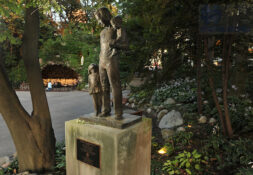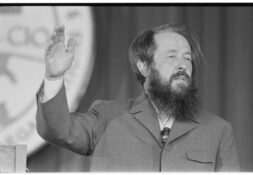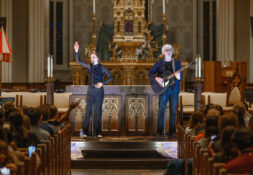Liz Everett, London Bureau
The last month of being abroad is a very strange experience because it forces you to look at the place you’ve been living in, the place you’ve been referring to as home, in a new light––the light of leaving.
The familiarity of the streets and the buildings is shaken as you begin to see them with new eyes. You appreciate their beauty and novelty in the way you did when you first arrived, when every time you stepped out of your door a new, exciting adventure awaited you. This freshness lasted for several weeks, and you crammed as many things into your days as possible; there’s so much to see, so much to do! More quickly than you expected, your life settled into a routine, and you felt like you’d always been here, that there was no other place you could possibly be at this time. This was home, and every time you thought about how much time you still had left, it was thrilling.
April is the cruelest month. With it comes the panic of papers and finals and trying to cram as many things into your weekdays and weekends as possible. In the midst of this chaos, the London Program decided to hold a talk entitled, “Taking Your New Home Back Home With You.” A few of my friends and I attended, lured by the promise of a great reception afterwards, which did not disappoint. The actual lecture, by Samuel Wells, an Anglican priest and the current Vicar of St. Martin in the Fields, was far beyond any of our expectations. He started off the discussion by asking the audience to consider how they would answer the question, “What is the fundamental problem of human existence?”
Wells asked several people to share their answers, which ranged from death to selfishness and greed, to scarcity to grasping at happiness. For most of them, they were based on a sense of limitation that if we could only overcome, the world would be a better place. Then Wells gave his own answer: isolation. The limitations we have as humans are opportunities for breaking down the barriers of isolation to form communities. He illustrated this distinction with the example of encountering a homeless person on the street. Assuming that you want to help, you have four options:
1. Working for that person: Talking to a member of Parliament or starting a homeless shelter would be examples of this.
2. Working with that person: community organizing, in which you take into account the opinions and experiences of a wide spectrum of homeless people.
3. Being for that person: writing an angry op-ed column about the horrors of homelessness.
4. Being with that person: buying him or her a cup of tea and drinking it together, talking on a more equal level.
Clearly, there is a distinction between how one addresses the homeless person when one is “for” or “with.” If you are for someone, you see their homelessness as a limitation that you must correct. In contrast to this, working or being with someone first acknowledges their humanity and does not assume from the outset that their very existence is a problem that must be solved. “I think relationships are the only ways to avoid tragedy,” Wells said, emphasizing the power of simply being with someone to combat their isolation.
The recent events in Boston made me reconsider some of the points that Wells made in his talk, especially about technology, which he saw as generally seeking to fight limitation rather than isolation. He ended his lecture with the statement that “technology is a commitment to making the world better without [necessarily] having to make yourself a better person.” Wells’ point is valid in that many people try to use technology as an excuse for not becoming a more virtuous person, but this is certainly not always the case.
Technology is merely a vehicle that depends upon the person using it. And this week, we got to see technology used in a way that furthered community and bettered all those who used it.
Very soon after the bombings at the end of the Boston Marathon, after the victims were rushed to the hospital and the police started informing the massive crowd that had assembled, a few bystanders decided that they would like to help out, in any way they could. Hostels and hotels had filled up quickly, and someone decided to start a simple Google spreadsheet in order to compile information for people to get lodgings for the night, or even just a hot meal and a shower. According to Will Oremus, a blogger who followed the progression of the Google doc, “The spreadsheet went up at 5:39 p.m., asking volunteers to post their name, contact information and a brief description of what amenities they could offer. By 5:42 p.m. there were more than 100 responses. By 6 p.m. the list had ballooned to 1,000 and people were adding their names at a rate of more than one every second. As of Tuesday afternoon, 24 hours after the first explosion, more than 5,500 people had signed up to open their homes to anyone affected by the blasts.”
The spreadsheet is filled with offers of couches, meals and transportation from those in the surrounding Boston area. It did not stop here, however. People from across the country were given the opportunity to get involved, even if it was only to express their concern or offer prayers for those affected. None of this would be possible without the simple technology of a spreadsheet, which was able to unite a nation responding to a tragedy. The contributors to this Google doc were acknowledging the physical limitations of the people they were serving, but also simply being with them in their time of need by offering prayers and words of support—using limitation to combat isolation. As my abroad experience nears its end and my eyes are reopened to the city around me, I am inspired to look at other aspects of the world in a new light as well, especially in terms of the responsibility of using technology.
Liz Everett is a junior PLS and English major studying abroad in London for the semester. Contact her at eeveret1@nd.edu.






Leave a Reply